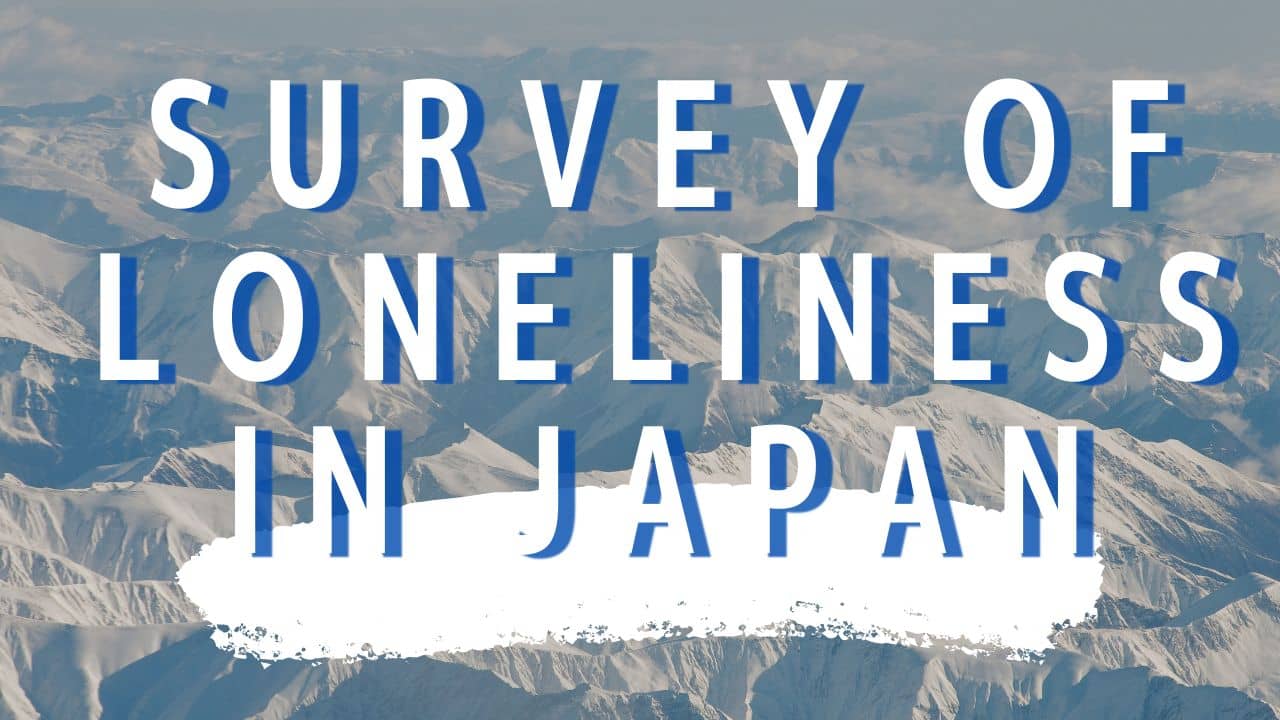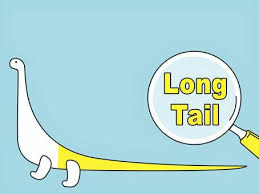I am summarizing government-published statistical information. If you want more detailed information, please refer to the government statistics portal (e-Stat) or the statistical data published by various ministries and agencies.
The percentage of individuals experiencing loneliness based on their type of residence
When looking at the data focusing on “often” and “sometimes” feelings of loneliness, variations in loneliness based on household income become apparent. Let’s compare the percentages of “often” and “sometimes” loneliness feelings by different income levels and consider some insights:
100 to 199 million yen:
- “Often” loneliness: 5.3%
- “Sometimes” loneliness: 17.1%
Insight: Even in middle-income households, the percentage of “sometimes” loneliness is relatively high. Despite having economic stability, the lack of social connections may lead to feelings of loneliness.
200 to 299 million yen:
- “Often” loneliness: 5.0%
- “Sometimes” loneliness: 15.5%
Insight: Middle-income households also show slightly higher percentages of “often” and “sometimes” loneliness. Economic stability coexists with the impact of insufficient social interactions.
300 to 399 million yen:
- “Often” loneliness: 4.1%
- “Sometimes” loneliness: 16.6%
Insight: The “sometimes” loneliness feeling is observed in middle-income households. While there is economic stability, the quality of relationships and frequency of communication may affect loneliness.
400 to 499 million yen:
- “Often” loneliness: 5.4%
- “Sometimes” loneliness: 16.8%
Insight: In middle-income households, the percentage of “sometimes” loneliness is slightly higher. Economic stability coexists with the impact of insufficient human relationships and social connections.
500 to 699 million yen:
- “Often” loneliness: 4.2%
- “Sometimes” loneliness: 14.4%
Insight: Even in the middle-to-high income bracket, “sometimes” loneliness is observed. While there is economic comfort, the quality and fulfillment of social relationships may impact feelings of loneliness.
700 to 999 million yen:
- “Often” loneliness: 3.3%
- “Sometimes” loneliness: 12.5%
Insight: In high-income households, “sometimes” loneliness is slightly observed. While there is economic stability, disparities in social communication may contribute to feelings of loneliness.
1,000 to 1,499 million yen:
- “Often” loneliness: 1.9%
- “Sometimes” loneliness: 13.9%
Insight: Even in the high-income group, “sometimes” loneliness is observed, but the percentage of “often” loneliness is low. Despite economic comfort, the quality of relationships and social support may play a role.
1,500 million yen or more:
- “Often” loneliness: 3.2%
- “Sometimes” loneliness: 12.9%
Insight: Even in the highest income category, “sometimes” loneliness is observed. However, the percentages of “often” and “sometimes” loneliness are close, suggesting that experiences of loneliness are spreading in high-income households.
| form of residence | often/always | sometimes | occationally | hardly | never | no answer |
|---|---|---|---|---|---|---|
| owned house[detached house] | 3.5 | 14.6 | 18.7 | 42.9 | 19.7 | 0.6 |
| owned house[apartment house] | 4.8 | 15.0 | 21.5 | 40.9 | 17.6 | 0.2 |
| rental housing | 8.7 | 20.7 | 21.5 | 33.2 | 15.4 | 0.5 |
| Public/UR/Public housing for rent | 8.9 | 15.3 | 23.0 | 37.6 | 13.8 | 1.4 |
| Salaried housing/dormitory/boarding house | 6.8 | 16.5 | 20.5 | 36.1 | 20.1 | – |
| Other/not sure | 10.0 | 24.7 | 19.3 | 31.7 | 13.1 | 1.2 |
Percentage of people who feel lonely by economic well-being (living conditions)
Percentage of people who feel lonely by economic well-being (living conditions)
The data suggests a correlation with economic well-being. Let’s summarize the insights derived from this data:
Impact of economic well-being:
- Those in the “very comfortable” and “somewhat comfortable” categories tend to experience relatively low levels of loneliness (4.2% and 3.4%, respectively).
- On the other hand, those in the “average,” “somewhat difficult,” and “very difficult” categories show a tendency to experience higher levels of loneliness (2.3%, 5.3%, and 14.2%, respectively).
Relationship between economic well-being and loneliness:
- There is a trend where those with greater economic comfort tend to experience lower levels of loneliness.
- Conversely, as economic hardship increases, there is a trend of higher levels of loneliness.
Overall, the data suggests that economic well-being may significantly influence feelings of loneliness. Particularly, individuals experiencing economic hardship are more likely to experience heightened feelings of loneliness. Economic support and social assistance could play a role in alleviating loneliness.
| household income | often/always | sometimes | occationally | hardly | never | no answer |
|---|---|---|---|---|---|---|
| 100 million yenless than | 8.1 | 19.1 | 18.0 | 35.7 | 18.0 | 1.2 |
| 100 ~199 million yen | 5.3 | 17.1 | 21.5 | 39.5 | 15.6 | 1.0 |
| 200 ~299 million yen | 5.0 | 15.5 | 19.6 | 41.7 | 17.5 | 0.7 |
| 300 ~399 million yen | 4.1 | 16.6 | 19.6 | 40.5 | 18.8 | 0.5 |
| 400 ~499 million yen | 5.4 | 16.8 | 18.5 | 41.7 | 17.5 | 0.2 |
| 500 ~699 million yen | 4.2 | 14.4 | 19.4 | 42.9 | 18.8 | 0.2 |
| 700 ~999 million yen | 3.3 | 12.5 | 19.4 | 44.4 | 20.3 | 0.2 |
| 1,000 ~1,499 million yen | 1.9 | 13.9 | 21.4 | 42.8 | 20.0 | – |
| 1,500 million yenmore than | 3.2 | 12.9 | 18.3 | 41.2 | 24.4 | – |
| わ~ない | 7.3 | 18.1 | 20.5 | 33.5 | 19.9 | 0.6 |
Percentage of people who feel lonely by economic comfort (lifestyle)
This data suggests a relationship between economic lifestyles. Here’s a summary of what you’ll notice:
- Impact of economic well-beings:
- Those who are “very comfortable” or “somewhat relaxed” have relatively low loneliness (4.2% and 3.4%).
- On the other hand, “normal”, “somewhat painful”, and “very painful” groups tend to feel more lonely (2.3%, 5.3%, and 14.2%, respectively).
- Relationship between economic lifestyle and loneliness:
- Those who have more financial space tend to feel less lonely.
- On the other hand, as economic hardship increases, loneliness tends to increase.
Overall, it suggests that economic lifestyle is likely to affect loneliness. In particular, people who are in financial difficulties feel more lonely. Financial and social support may help alleviate loneliness.
| often/always | sometimes | occationally | hardly | never | no answer | |
|---|---|---|---|---|---|---|
| Very financially comfortable | 4.2 | 11.5 | 14.1 | 33.5 | 35.6 | 1.0 |
| Somewhat financially comfortable | 3.4 | 11.8 | 18.2 | 43.4 | 22.8 | 0.4 |
| normal | 2.3 | 12.4 | 18.4 | 45.7 | 20.7 | 0.5 |
| Somewhat financially challenged | 5.3 | 18.3 | 22.6 | 38.4 | 14.7 | 0.7 |
| Very financially distressed | 14.2 | 25.9 | 19.0 | 26.6 | 13.5 | 0.7 |
Percentage of people who feel lonely by economic well-being (living conditions) and age
This data reveals the relationship between age groups and economic well-being in terms of how they influence feelings of loneliness. Let’s summarize the findings:
Young Adults (Ages 16-19):
- The “very comfortable” group experiences particularly high levels of loneliness (53.3%).
- Conversely, the “somewhat comfortable” and “average” groups have lower levels of loneliness, while the “somewhat difficult” and “very difficult” groups exhibit higher levels of loneliness.
Young Adults (Ages 20-29):
- The “very difficult” group experiences high levels of loneliness (24.8%).
- The “very comfortable” and “somewhat comfortable” groups have lower levels of loneliness, while the “average” and “somewhat difficult” groups show relatively higher levels of loneliness.
Middle-Aged Adults (Ages 30-39):
- The “very comfortable” group experiences high levels of loneliness (16.7%).
- The “average” and “somewhat difficult” groups have relatively higher levels of loneliness, while the “very difficult” group exhibits lower levels of loneliness.
Middle-Aged (Ages 40-49) and Late Middle-Aged (Ages 50-59) Adults:
- Loneliness levels don’t show significant fluctuations within age groups, indicating that economic well-being has a significant impact on feelings of loneliness.
Elderly Adults (Ages 60 and above):
- The “very comfortable” and “somewhat comfortable” groups exhibit relatively high levels of loneliness.
- As age increases, there is a tendency for loneliness levels to decrease among the “somewhat difficult” and “very difficult” economic well-being groups.
In summary, the relationship between economic well-being and feelings of loneliness varies across different age groups. Notably, younger age groups tend to experience increased loneliness as economic hardship rises, while the connection becomes more complex in middle-aged and elderly groups.
| often/always | sometimes | occationally | hardly | never | no answer | |
|---|---|---|---|---|---|---|
| 16~19years old|Very financially comfortable | 6.7 | 13.3 | 6.7 | 20.0 | 53.3 | – |
| 16~19years old|Somewhat financially comfortable | 10.4 | 14.6 | 22.9 | 33.3 | 18.8 | – |
| 16~19years old|normal | 2.5 | 17.8 | 12.3 | 35.6 | 31.9 | – |
| 16~19years old|Somewhat financially challenged | 7.2 | 18.8 | 20.3 | 34.8 | 18.8 | – |
| 16~19years old|Very financially distressed | 7.7 | 19.2 | 11.5 | 30.8 | 30.8 | – |
| 20~29years old|Very financially comfortable | – | 20.8 | 8.3 | 20.8 | 50.0 | – |
| 20~29years old|Somewhat financially comfortable | 5.6 | 13.9 | 23.1 | 34.3 | 23.1 | – |
| 20~29years old|normal | 5.9 | 19.1 | 22.5 | 32.3 | 20.2 | – |
| 20~29years old|Somewhat financially challenged | 5.7 | 21.4 | 19.1 | 33.6 | 20.2 | – |
| 20~29years old|Very financially distressed | 17.4 | 24.8 | 20.2 | 21.1 | 16.5 | – |
| 30~39years old|Very financially comfortable | 16.7 | 8.3 | 25.0 | 25.0 | 25.0 | – |
| 30~39years old|Somewhat financially comfortable | 3.2 | 14.2 | 18.7 | 38.7 | 25.2 | – |
| 30~39years old|normal | 3.8 | 13.7 | 18.4 | 39.8 | 24.0 | 0.2 |
| 30~39years old|Somewhat financially challenged | 7.1 | 22.5 | 24.1 | 32.7 | 13.7 | – |
| 30~39years old|Very financially distressed | 20.1 | 32.8 | 12.1 | 24.1 | 10.9 | – |
| 40~49years old|Very financially comfortable | 9.5 | 23.8 | 14.3 | 33.3 | 19.0 | – |
| 40~49years old|Somewhat financially comfortable | 3.8 | 14.1 | 13.5 | 48.1 | 20.5 | – |
| 40~49years old|normal | 2.1 | 13.6 | 21.0 | 43.4 | 19.7 | 0.1 |
| 40~49years old|Somewhat financially challenged | 6.5 | 20.2 | 22.7 | 36.2 | 14.2 | 0.2 |
| 40~49years old|Very financially distressed | 17.7 | 26.6 | 21.5 | 20.3 | 13.9 | – |
| 50~59years old|Very financially comfortable | 5.3 | 5.3 | 13.2 | 42.1 | 34.2 | – |
| 50~59years old|Somewhat financially comfortable | 4.7 | 11.4 | 23.7 | 39.0 | 21.2 | – |
| 50~59years old|normal | 3.6 | 15.0 | 22.1 | 42.5 | 16.6 | 0.2 |
| 50~59years old|Somewhat financially challenged | 7.2 | 19.8 | 23.8 | 35.9 | 13.2 | 0.2 |
| 50~59years old|Very financially distressed | 14.0 | 28.0 | 20.1 | 30.3 | 7.6 | – |
| 60~69years old|Very financially comfortable | 3.3 | 10.0 | 16.7 | 33.3 | 36.7 | – |
| 60~69years old|Somewhat financially comfortable | 1.0 | 11.6 | 22.2 | 44.4 | 20.7 | – |
| 60~69years old|normal | 1.2 | 10.6 | 16.7 | 51.1 | 20.2 | 0.2 |
| 60~69years old|Somewhat financially challenged | 4.2 | 16.3 | 22.6 | 42.8 | 13.8 | 0.3 |
| 60~69years old|Very financially distressed | 14.8 | 23.8 | 22.5 | 25.0 | 13.5 | 0.4 |
| 70~79years old|Very financially comfortable | – | 3.3 | 16.7 | 43.3 | 30.0 | 6.7 |
| 70~79years old|Somewhat financially comfortable | 2.2 | 7.3 | 11.2 | 50.3 | 27.4 | 1.7 |
| 70~79years old|normal | 0.8 | 7.6 | 16.1 | 52.9 | 21.5 | 1.1 |
| 70~79years old|Somewhat financially challenged | 3.5 | 13.1 | 21.8 | 44.2 | 15.6 | 1.8 |
| 70~79years old|Very financially distressed | 9.1 | 22.6 | 17.7 | 30.6 | 18.9 | 1.1 |
| 80years oldmore than|Very financially comfortable | – | 14.3 | 14.3 | 33.3 | 38.1 | – |
| 80years oldmore than|Somewhat financially comfortable | – | 9.6 | 6.8 | 56.2 | 24.7 | 2.7 |
| 80years oldmore than|normal | 1.4 | 11.4 | 15.1 | 49.7 | 21.1 | 1.2 |
| 80years oldmore than|Somewhat financially challenged | 1.9 | 17.7 | 23.9 | 39.4 | 14.2 | 2.9 |
| 80years oldmore than|Very financially distressed | 8.4 | 24.4 | 18.3 | 32.8 | 11.5 | 4.6 |
Percentage of people who feel lonely by economic well-being (living conditions) and gender
This data focuses on the relationship between gender (men) and economic well-being. Let’s summarize the findings:
Loneliness Rates by Economic Well-being for Men:
- The “very comfortable” group experiences relatively high levels of loneliness (37.2%).
- The “somewhat comfortable” and “average” groups have lower levels of loneliness, while the “somewhat difficult” and “very difficult” groups exhibit higher levels of loneliness.
This data reveals that economic well-being has an impact on feelings of loneliness among men. It’s evident that even among those who perceive economic comfort, there are individuals experiencing loneliness. Conversely, among those facing economic hardships, many also report higher levels of loneliness.
Loneliness Rates by Economic Well-being for Women:
- The “very comfortable” group experiences relatively high levels of loneliness (34.4%).
- The “somewhat comfortable” and “average” groups have lower levels of loneliness, while the “somewhat difficult” and “very difficult” groups exhibit higher levels of loneliness.
Similarly, this data shows that economic well-being influences feelings of loneliness among women. Among those who perceive economic comfort, there are individuals experiencing loneliness, and among those facing economic hardships, many also report higher levels of loneliness.
| often/always | sometimes | occationally | hardly | never | no answer | |
|---|---|---|---|---|---|---|
| male|Very financially comfortable | 3.2 | 9.6 | 10.6 | 37.2 | 37.2 | 2.1 |
| male|Somewhat financially comfortable | 4.3 | 11.3 | 19.0 | 41.4 | 23.7 | 0.4 |
| male|normal | 2.3 | 11.7 | 17.5 | 46.4 | 21.4 | 0.6 |
| male|Somewhat financially challenged | 5.5 | 18.4 | 21.0 | 39.7 | 14.5 | 0.8 |
| male|Very financially distressed | 14.3 | 26.7 | 18.8 | 27.7 | 12.0 | 0.4 |
| often/always | sometimes | occationally | hardly | never | no answer | |
|---|---|---|---|---|---|---|
| female|Very financially comfortable | 5.2 | 13.5 | 17.7 | 29.2 | 34.4 | – |
| female|Somewhat financially comfortable | 2.5 | 12.2 | 17.4 | 45.2 | 22.1 | 0.5 |
| female|normal | 2.3 | 12.9 | 19.1 | 45.3 | 20.0 | 0.4 |
| female|Somewhat financially challenged | 5.0 | 18.0 | 24.0 | 37.5 | 14.9 | 0.6 |
| female|Very financially distressed | 13.7 | 25.1 | 19.5 | 25.8 | 14.9 | 0.9 |




